- 翰林提供学术活动、国际课程、科研项目一站式留学背景提升服务!
- 400 888 0080
Edexcel A Level Economics A:复习笔记2.1.4 Balance of Payments
Components of the Balance of Payments
- The Balance of Payments (BoP) for a country is a record of all the financial transactions that occur between it and the rest of the world
- The BoP has two main sections:
- The current account: all transactions related to goods/services along with payments related to the transfer of income
- The financial & capital account: all transactions related to savings, investment and currency stabilisation
- It is called the BoP as the current account should balance with the capital/financial account and be equal to zero
- If the current account balance is positive, then the capital/financial account balance is negative (and vice versa)
- Money flowing into the country is recorded in the relevant account as a credit (+) and money flowing out as a debit (-)
The Current Account of the Balance of Payments
- The Current Account is often considered to be the most important account in the BoP
- It records the net income that an economy gains from international transactions
An Example of the UK Current Account Balance For 2017
| Component | 2017 |
| Net trade in goods (exports - imports) | £-32.9bn |
| Net trade in services (exports - imports) | £27.9bn |
| Sub-total trade in goods/services | £-5bn |
| Net income (interest, profits & dividends) | £-2.1bn |
| Current transfers | £-3.6bn |
| Total Current Account Balance | £-10.7bn |
| Current Account as a % of GDP | 3.7% |
- Goods are also referred to as visible exports/imports
- Services are also referred to as invisible exports/imports
- Net income consists of income transfers by citizens and corporations
- Credits are received from UK citizens who are abroad and send remittances home
- Debits are sent by foreigners working in the UK back to their countries
- Current transfers are typically payments at government level between countries e.g. contributions to the World Bank
- The Current Account balance is often expressed as a % of GDP
- This allows for easy international comparisons
Current Account Deficits and Surpluses
- A Current Account deficit occurs when the value of the outflows is greater the value of the inflows
- Usually occurs when the imports > exports
- A Current Account surplus occurs when the value of the inflows is greater the value of the outflows
- Usually occurs when imports < exports
- The UK government has a macroeconomic aim to get their Current Account balance as close to equilibrium as possible
- Most years it tends to run a small deficit
- Export led economic growth would help it become positive
- However, with increasing income and wealth in an economy, the value of imports rises
- Consumers enjoy the variety of goods/services abroad
- Rising imports push the balance towards a deficit
Exam Tip
Students sometimes confuse a UK Government Budget deficit with a Current Account deficit. Ensure that your understanding of the distinction between these two concepts is clear.
The Budget deficit occurs when: UK Government spending > UK Government revenue (tax receipts).
The Current Account deficit refers to the BOP.
The Relationship Between the Current Account Imbalances & Macroeconomic Objectives
- The UK government has a range of macroeconomic objectives which they attempt to achieve
- Setting policies to target one objective may complicate the possibility of achieving other objectives
- There is a trade-off
- If the Current Account is running a deficit, this has a negative impact on aggregate demand (AD)
- Net exports are a component of AD
- If net exports are negative then AD decreases
- To correct the current account deficit, the government could raise tariffs
- This would likely decrease imports bought by households
- Firms who rely on imports for raw materials used in production, would now face higher costs of production
- These higher costs are likely to be passed on to consumers in the form of higher prices
- Reducing the current account deficit has come at the expense of increased inflation in the economy - there has been a trade-off
The Interconnectedness of Economies Through Trade
- The world is more connected than ever and there is a high level of interdependence between economies
- Covid 19 and the Ukraine War demonstrated how disruptions in one part of the world cause widespread problems in others
- One country's imports are another country's exports
- Theoretically, the global value of exports will be equal to the global value of imports
- Producers all over the world are often highly dependent on imported raw materials used in production e.g. a motor car has around 30,000 individual parts
- Building a car is a global effort and requires a high level of interconnectedness between multiple economies
转载自savemyexams
站内搜索
竞赛真题免费下载(点击下载)
在线登记
最新发布
© 2024. All Rights Reserved. 沪ICP备2023009024号-1





